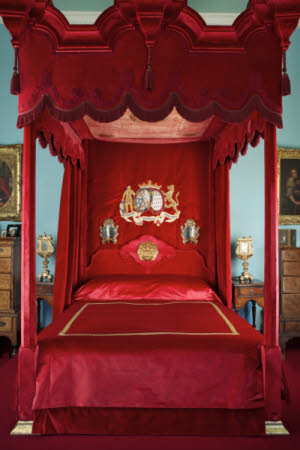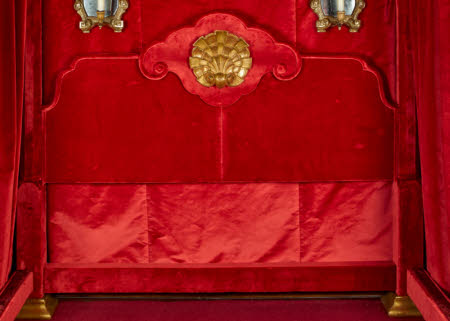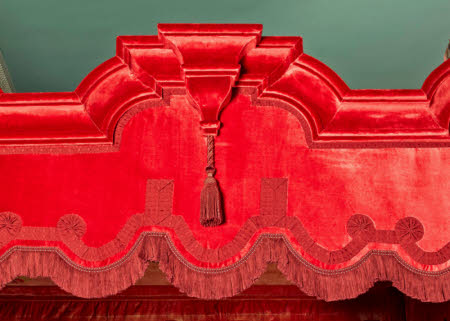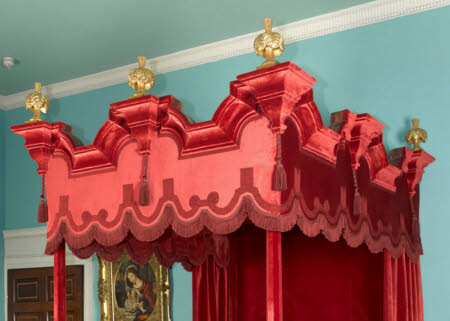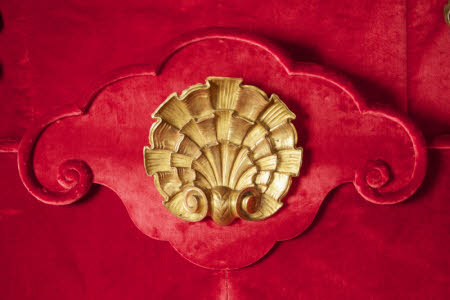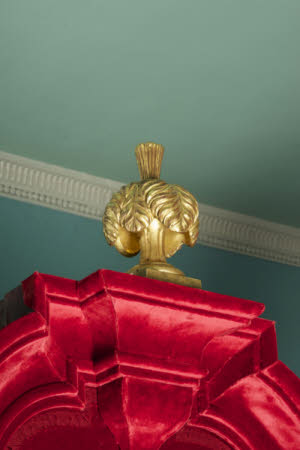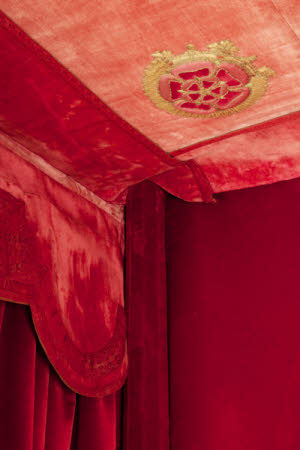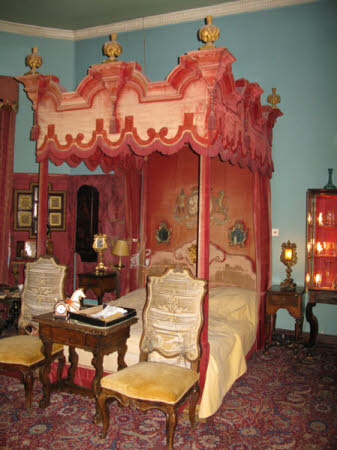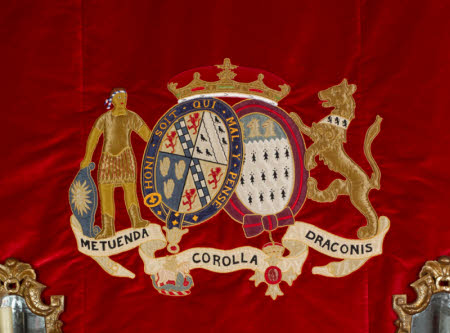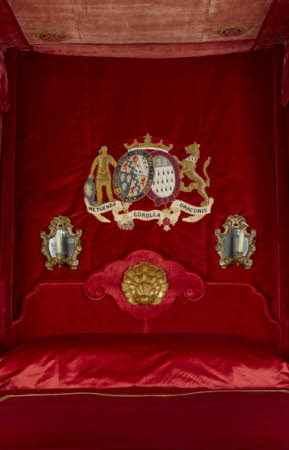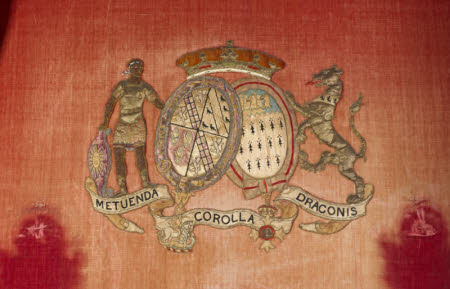'The Mount Stewart State Bed'
Category
Furniture
Date
circa 1710
Materials
Oil gilded and water gilded deal, oak, yew mouldings, velvet and other textile
Measurements
278 x 200 x 227 cm
Place of origin
London
Order this imageCollection
Mount Stewart, County Down
NT 1655858
Summary
An oil gilded and water gilded deal, oak, yew and velvet upholstered tester bedstead, English, circa 1710. With an arcaded cornice covered in red velvet, surmounted by carved giltwood plumes, festooned with braided red velvet outer and inner valances and tassels (one tassel missing). The four octagonal tapered posts on gilt moulded plinths, the arched headboard covered in worn red velvet and adorned at the centre with a carved and gilded shell. The red velvet head cloth adorned with applied embroidered arms of the 7th Marquis with motto ‘METUENDA COROLLA DRACONIS’. The inner tester embroidered with the badge of the Women's League (1915) and motto ‘ora et labora’. Two head curtains of red velvet and three lower valances of red velvet with a red and cream damask heading sleeve with wooden laths. Alterations to the construction.
Full description
The cornicing on the Mount Stewart bed is comparable to other examples in the National Trust Collection; An elaborate State Bed (NT 453089) was supplied to William Blathwayt at Dyrham Park sometime after 1703, it does nor appear in the 1703 inventory but is included in 1710. It is thought that Blathwayt ordered the bed in anticipation of a possible visit from Queen Anne in 1703. It was probably Lady Brownlow, widowed in 1697, who ordered the state bed at Belton House c.1710 (NT 435144) which is unfortunately not identifiable in either the 1737 or 1754 house inventories but we do know that it was re-upholstered in 1813 and was most likely originally hung with a similar crimson silk. The inspiration for state beds of this period is often attributed to Daniel Marot (1661-1752), whose published designs are certainly the most numerous and complete expressions of the style. The profile of the cornice with its prominent corners is repeated on other examples, such as those made for the Duke of Devonshire and the Earl of Melville in the 1690s. Both these beds and the Dyrham and Belton examples are attributed to Francis Lapiere (1653-1714) but Marot’s contribution to the design is unclear. The designs appear in Marot’s engravings post 1712 and demonstrate only that that he was aware of of the form and approved, therefore there is no evidence to suggest that the designs are his own. Marot was however instrumental in promoting such beds in Holland where they remained popular throughout the first half of the 18th century. (James Weedon, February 2019)
Provenance
AIL transfer from HM Government in lieu of Inheritance Tax of family objects from the Estate of The Lady Mairi Bury, allocated to the National Trust in 2013.
References
Bowett 2002 Adam Bowett, English Furniture 1660-1714, 2002 , pg.186 Thornton, 1978: Peter Thornton, 17th century Interior Decoration in England, France and Holland, New Haven and London, 1978 Edwards, Ralph, 1894-1977 shorter dictionary of English furniture : 1964.

